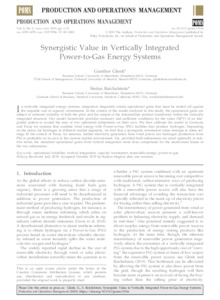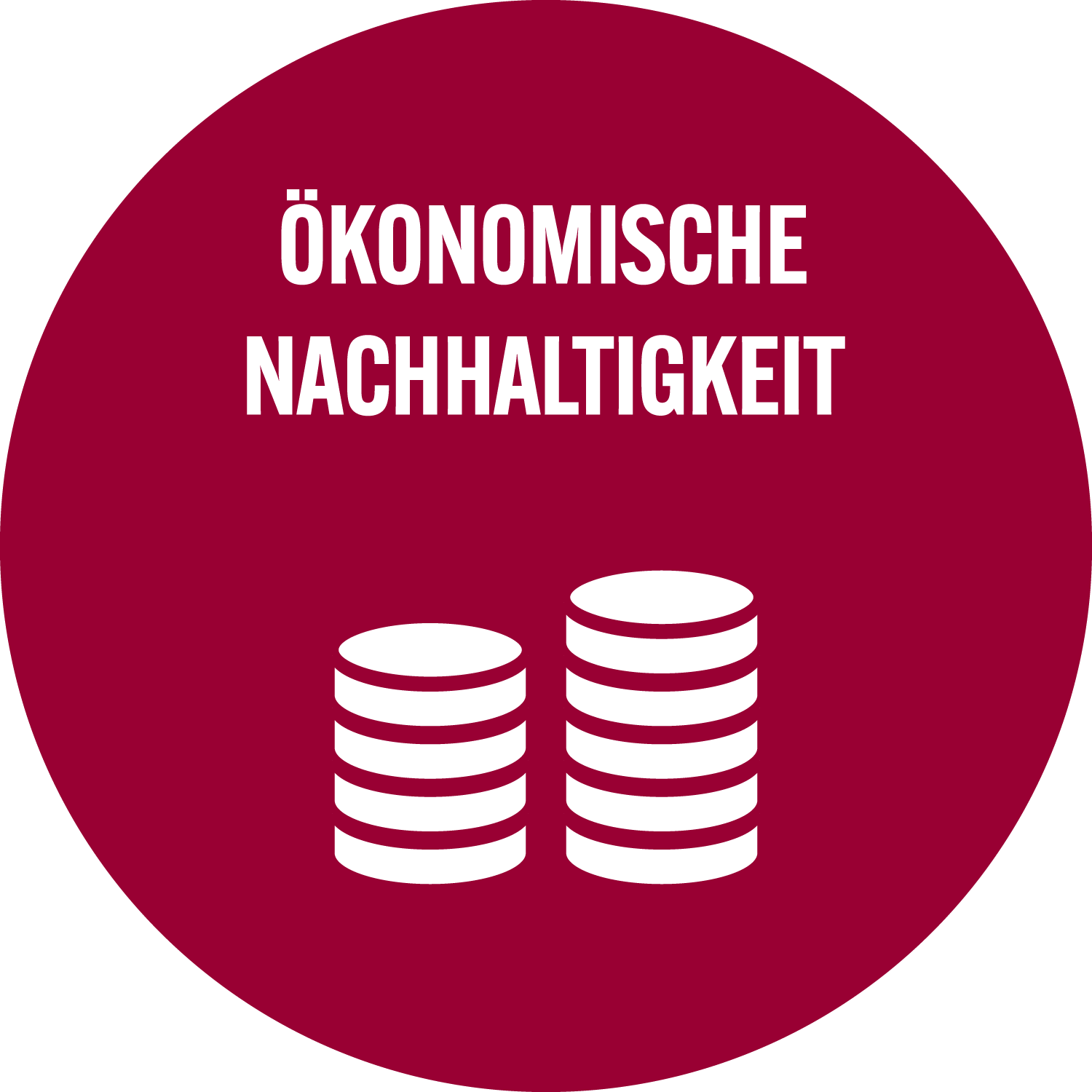|
Synergistic value in vertically integrated power‐to‐gas energy systems
Glenk, Gunther
;
Reichelstein, Stefan
![[img]](https://madoc.bib.uni-mannheim.de/52585/1.hassmallThumbnailVersion/Synergistic%20Value%20in%20Vertically%20Integrated...2019.pdf)  Vorschau |
|
PDF
Synergistic Value in Vertically Integrated...2019.pdf
- Veröffentlichte Version
Download (1MB)
|
|
DOI:
|
https://doi.org/10.1111/poms.13116
|
|
URL:
|
https://madoc.bib.uni-mannheim.de/52585
|
|
Weitere URL:
|
https://onlinelibrary.wiley.com/doi/full/10.1111/p...
|
|
URN:
|
urn:nbn:de:bsz:180-madoc-525853
|
|
Dokumenttyp:
|
Zeitschriftenartikel
|
|
Erscheinungsjahr:
|
2020
|
|
Titel einer Zeitschrift oder einer Reihe:
|
Production and Operations Management
|
|
Band/Volume:
|
29
|
|
Heft/Issue:
|
3
|
|
Seitenbereich:
|
526-546
|
|
Ort der Veröffentlichung:
|
Hoboken, NJ
|
|
Verlag:
|
Wiley-Blackwell
|
|
ISSN:
|
1059-1478 , 1937-5956
|
|
Sprache der Veröffentlichung:
|
Englisch
|
|
Einrichtung:
|
Fakultät für Betriebswirtschaftslehre > Stiftungsprofessur für ABWL (Reichelstein 2018-)
|
|
Bereits vorhandene Lizenz:
|
 Creative Commons Namensnennung 4.0 International (CC BY 4.0) Creative Commons Namensnennung 4.0 International (CC BY 4.0)
|
|
Fachgebiet:
|
333.7 Natürliche Ressourcen, Energie und Umwelt
|
|
Freie Schlagwörter (Englisch):
|
operational volatility , vertical integration , capacity investment , renewable energy , power‐to‐gas
|
|
Abstract:
|
In vertically integrated energy systems, integration frequently entails operational gains that must be traded off against the requisite cost of capacity investments. In the context of the model analyzed in this paper, the operational gains are subject to inherent volatility in both the price and the output of the intermediate product transferred within the vertically integrated structure. Our model framework provides necessary and sufficient conditions for the value (NPV) of an integrated system to exceed the sum of two optimized subsystems on their own. We then calibrate the model in Germany and Texas for systems that combine wind energy with Power‐to‐Gas (PtG) facilities that produce hydrogen. Depending on the prices for hydrogen in different market segments, we find that a synergistic investment value emerges in some settings. In the context of Texas, for instance, neither electricity generation from wind power nor hydrogen production from PtG is profitable on its own in the current market environment. Yet, provided both subsystems are sized optimally in relative terms, the attendant operational gains from vertical integration more than compensate for the stand‐alone losses of the two subsystems.
|
|
Zusätzliche Informationen:
|
This is an open access article under the terms of the Creative Commons Attribution License, which permits use, distribution and reproduction in any medium, provided the original work is properly cited.
|
 
 | Dieser Eintrag ist Teil der Universitätsbibliographie. |
 | Das Dokument wird vom Publikationsserver der Universitätsbibliothek Mannheim bereitgestellt. |
 Suche Autoren in Suche Autoren in
Sie haben einen Fehler gefunden? Teilen Sie uns Ihren Korrekturwunsch bitte hier mit: E-Mail
Actions (login required)
 |
Eintrag anzeigen |
|
|
 ORCID: 0000-0003-2540-838X ; Reichelstein, Stefan
ORCID: 0000-0003-2540-838X ; Reichelstein, Stefan



 Creative Commons Namensnennung 4.0 International (CC BY 4.0)
Creative Commons Namensnennung 4.0 International (CC BY 4.0)

 Suche Autoren in
Suche Autoren in